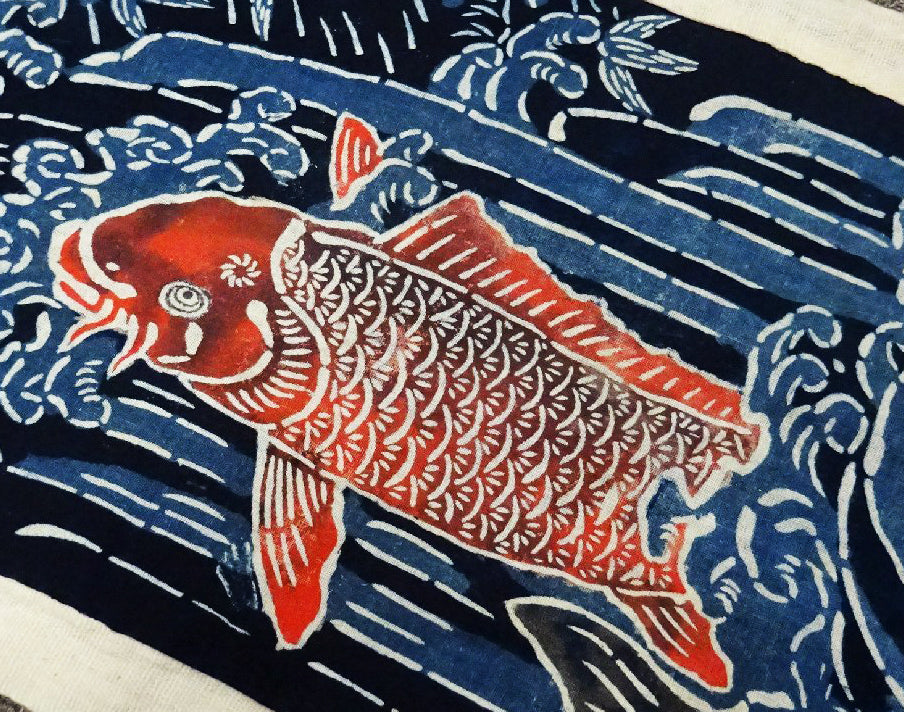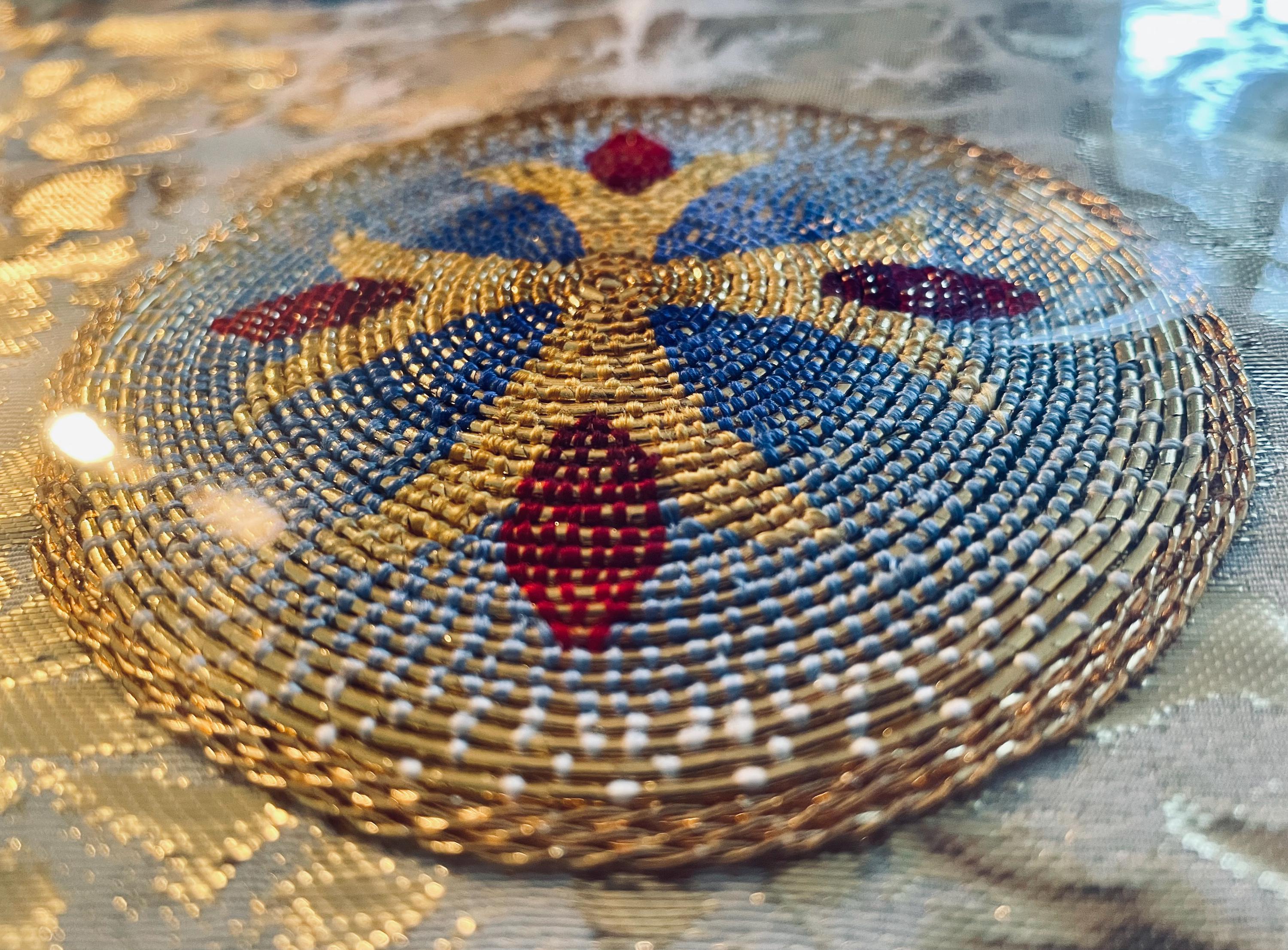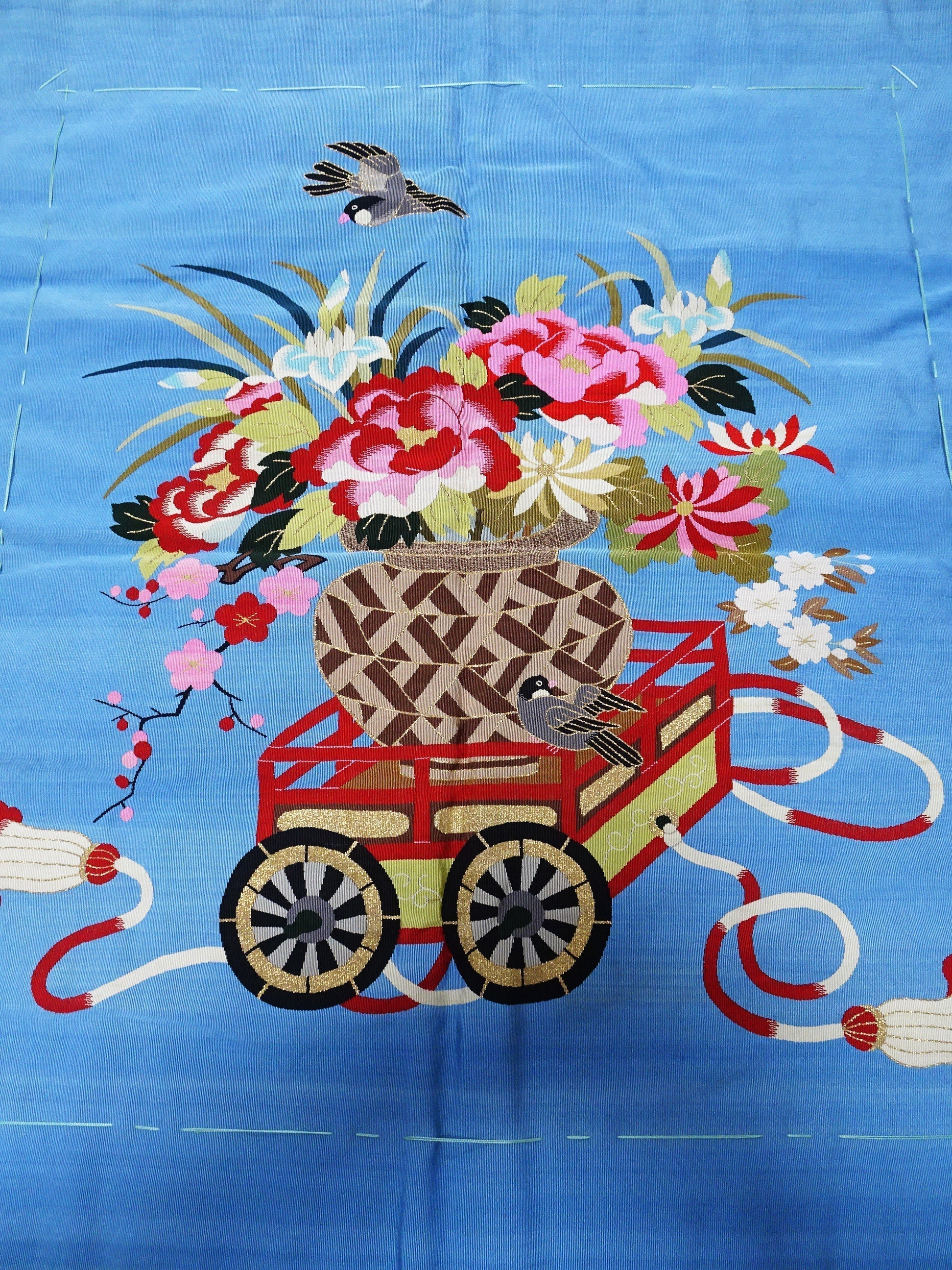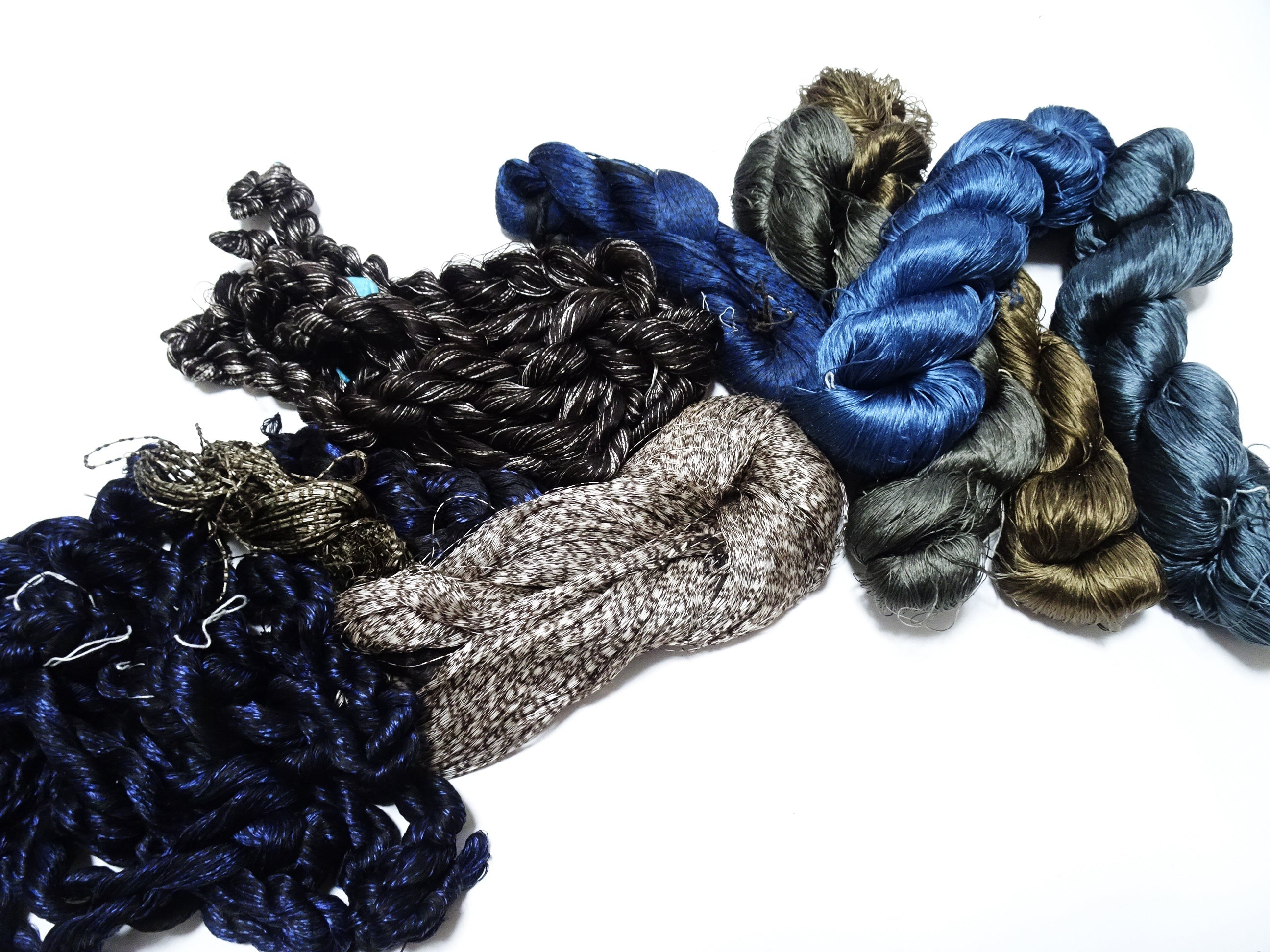Tsutsugaki is a type of "norioki" (glue placement), in which a metal nozzle (tube tip) is attached to the end of a paper tube, and glue is poured into it and squeezed out to draw free-form lines and patterns on the fabric.
It's like squeezing cream onto a cake with a piping bag.

Technique flow (general process)
1. Fabric preparation
Natural materials such as cotton and linen are often used.
In some cases, the fabric is rinsed with water to remove excess glue and oil.
2. Sketch (if necessary)
Draw a sketch of the design using thin ink or similar.
3. Glue placement (tube writing)
Put glue (rice paste or rice paste) into a tube (tube drawing tool) and squeeze it out from the tip to draw a pattern on the fabric.
The glue is used to prevent the fabric from dyeing.
4. Drying
Allow the glue to dry thoroughly.
5. Dyeing
The entire fabric is dyed with indigo or vegetable dyes. The glued parts remain white and do not dye.
6. Washing with water and removing glue
After dyeing, wash with water to remove the glue.
The parts that were protected from dyeing by the glue remain white and become the pattern.
7. Finishing
Wash with water and dry, and finish with an iron or stretcher if necessary.

Characteristics Description
Freedom of drawing
Because a tube is used instead of a brush, the lines are three-dimensional and have a unique feel. It feels almost hand-drawn.
Improvisation
Because it can be drawn without a preliminary sketch, it allows for improvisational expression. It can also be expressed like calligraphy or painting.
Three-dimensional lines
Due to the rise of the glue, the lines can remain three-dimensional even after completion.

Types of glue used
Mochi glue (rice flour + rice bran + lime)
A traditional blend that is easy to wash off and has high dye resistance.
Rice glue
Suitable for fine lines, but dries quickly so you need to work quickly.
Chemical glue (modern times)
Stable and suitable for beginners.


Main dyeing methods using Tsutsugaki
YOGI
Yogi is literally something you wear at night. It is a type of futon, but it is shaped like a kimono with sleeves. It is like a futon with sleeves, and it can be worn as well as draped over the body.
FUTON, FUROSHIKI. NOREN、HANTEN
Horse Decoration(Uma no harakake)...etc
Indigo dyeing (particularly works well with Kochi's Tosa indigo and Tokushima's Awa indigo)
Used in conjunction with stencil dyeing (such as Tsutsugaki Yuzen)
Noren, furoshiki, tenugui, yukata fabric, etc.

Go to the TSUTSUGAKI sales page.
🔹 Origin and history of Tsutsugaki
● Origin
It is said that the technique has existed since the Muromachi period (14th to 16th centuries).
It appeared with the development of dyeing technology and was widely used for everyday items such as clothing for common people, curtains, furoshiki, and flags.
● Development in the Edo period
In the mid-Edo period (around the 18th century), pattern dyeing became popular along with the development of popular culture.
In Kyoto, Sakai, Ise, Edo (present-day Tokyo), where the dyeing industry was thriving, craftsmen expressed various patterns using the Tsutsugaki technique.
It spread in popular culture, especially alongside "Ise Katagami".
● Relationship with the Mingei movement
In the early 20th century, it was reevaluated in the Mingei movement led by Yanagi Muneyoshi.
Its beauty as an everyday tool and its simple, warm patterns are highly valued, and it is still passed down by some workshops and dyers today.
Today, while it has taken root in the region as a traditional craft, dyeing artists and other artists are creating new expressions. Unlike digitalized and mechanized mass production, it is attracting attention again as a technique that conveys the warmth of "handmade."
A one-of-a-kind pattern created by hand.
Written by hand and colored by time, the warmth of Tsutsugaki writing.






